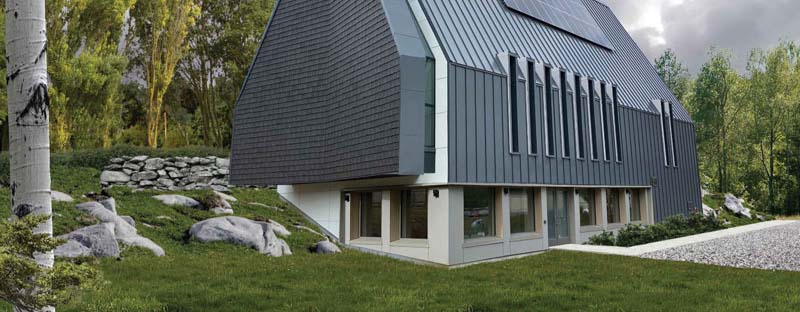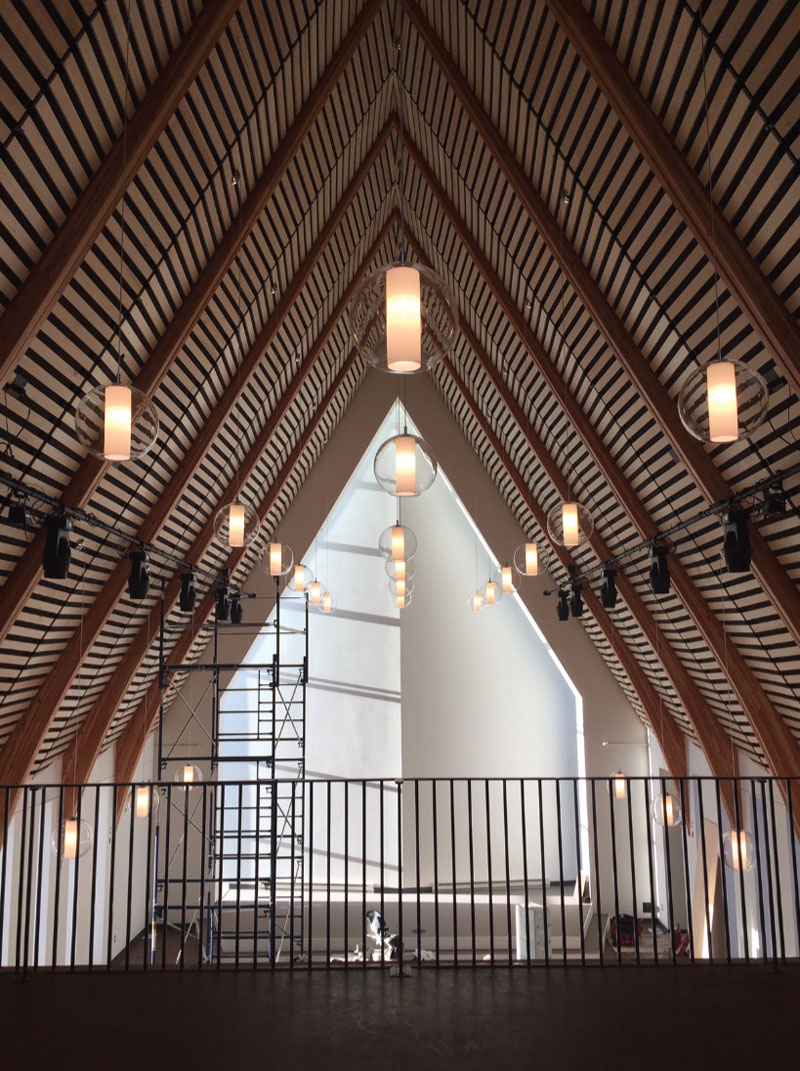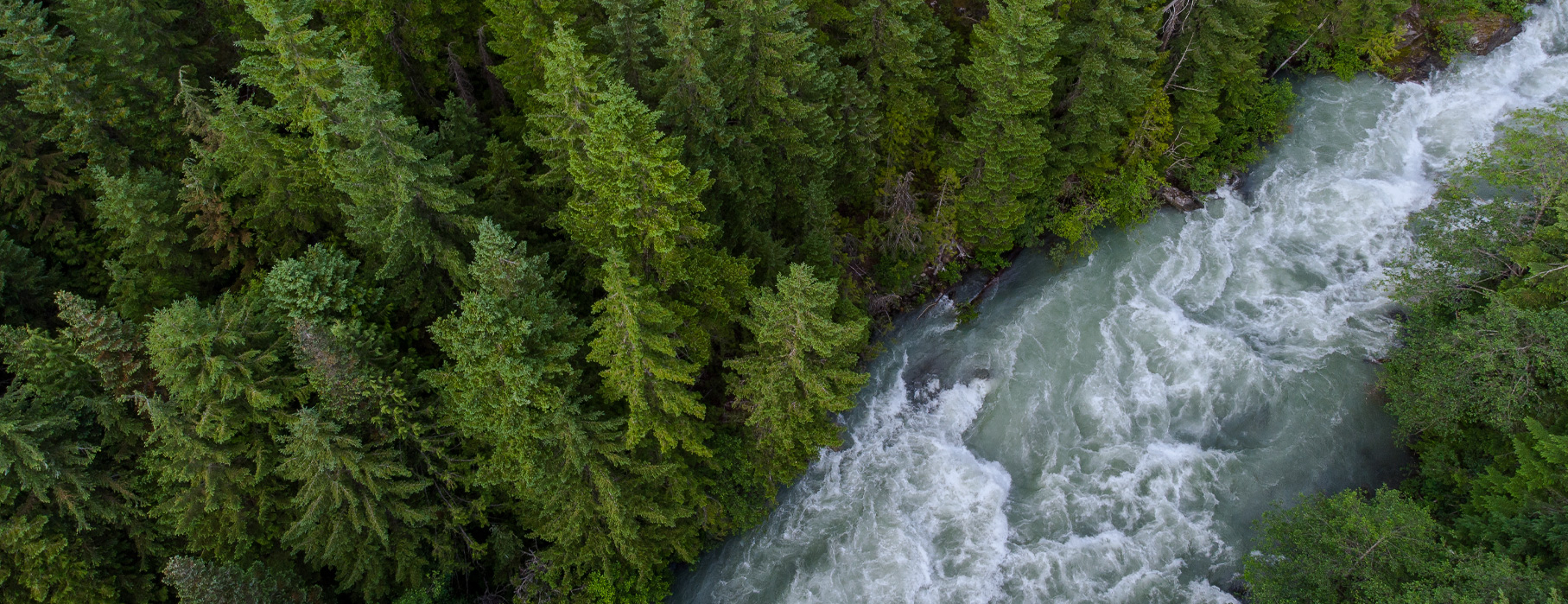Community building brings superb energy performance to northern climate


The Doig River Cultural Centre in Rose Prairie, BC is among Canada’s most northerly PHI-certified projects and the first certified First Nations community building completed. The main level comprises 250m2 of community-oriented space with an upper mezzanine for additional seating and a lower level comprising a daycare and an Elders lounge. The design, which allows for multiple uses within a single building, was intended to promote inter-generational interaction and fulfill the community’s desire for a safe and healthy space for all its members.
In such a small and remote community, a close network of buildings is crucial to establish a central gathering place and create a critical mass for community functions. The
project’s site locates the Centre close to the existing community administration building to create a somewhat civic centre. This proximity also minimized the need for major infrastructure expansion.
Nestled into the slope in a grove of birch and aspen trees, the building complements its natural surroundings and offers a gesture of welcome at the entrance to the community. The slope also facilitates grade access to both levels, which eliminates the need for an elevator or wheelchair lift.
The choice of building form and orientation were critical, with a large south-facing roof and extensive glazing required to maximize winter solar heat gain and optimize PV panel exposure. This orientation also creates a dynamic display of light and shadow across the splayed walls as the melting snow constantly shifts and changes shape as
it makes its way down the surface of the glass. The compact two-level plus mezzanine organization of the program minimizes the building’s footprint, reduces the surface-to-volume ratio, and lessens the environmental impact of the building on the site.
The structure is a hybrid of site-built and prefabricated components, thus increasing quality and precision. The primary structural system consists of glue-laminated arches with prefabricated panels between them that arrived on site with pre-installed insulation. An additional 300mm of insulation was added around the entire perimeter of the building, which was secured using wood strapping and 350mm screws.
The screws were oriented at opposing angles in a truss-like configuration to ensure vertical rigidity and prevent the insulation from sagging. Fastening the thick layer of insulation to the face of the sheathing required careful detailing and a new approach to the cladding system design. The exterior cladding materials comprise standing seam metal roof and wall cladding, and a composite shake product made from recycled plastic and wood fibres that comes with a 50-year warranty.
Mechanical design strategies include a highly efficient instantaneous domestic hot water heater with a recirculation pump to supply hot water to all the fixtures, two Tempeff 90% efficient heat recovery ventilators with MERV 8 air filters, electric duct heaters in the supply air ducts, and insulation for extreme cold climate motorized dampers on both the intake and discharge of both units. The heat recovery units are controlled by occupancy sensors so that the units only run when motion is detected in the spaces. All the air systems were balanced to within +/-5% of the design volumes and air tightness tests indicated a rating of 0.41ACH @ 75Pa.
The project, which is in the cold northeast corner of British Columbia, requires that the building be in heating mode for almost ten months per year; however, the super insulated envelope means this can be achieved with very few electric baseboard heaters. The expansive windows provide access to ample natural daylighting and warmth, and the PV array on the roof further enhances the building’s passive design performance.
The superior envelope performance, including R70 walls and roof and quad glazing throughout, means that the building remains comfortable with minimal input heat in temperatures as low as -35°C. The projected annual energy consumption for the building is 45.2 kWh/m2 per year, which is approximately 90% less than a traditionally designed building. The rooftop photovoltaic array provides up to 10kW of additional energy. The robust envelope and low-energy systems will ensure that the Centre will serve the community for generations to come at a substantially reduced cost compared to other facilities.
PROJECT CREDITS
ARCHITECT Iredale Architecture
OWNER/DEVELOPER Doig River First Nation
GENERAL CONTRACTOR Erik Olofsson Construction Inc.
LANDSCAPE ARCHITECT Urban Systems
CIVIL ENGINEER Urban Systems
ELECTRICAL ENGINEER EDG Corporation
MECHANICAL ENGINEER Rocky Point Engineering Ltd.
STRUCTURAL ENGINEER Equilibrium Consulting Inc.
PASSIVE HOUSE CONSULTANT RDH Building Science
PASSIVE HOUSE CERTIFIER Edsco
GEOTECHNICAL ENGINEER Golder Associates





